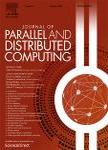版权所有:内蒙古大学图书馆 技术提供:维普资讯• 智图
内蒙古自治区呼和浩特市赛罕区大学西街235号 邮编: 010021

作者机构:UNIST Sch ECE 50 UNIST Gil Ulsan South Korea
出 版 物:《JOURNAL OF PARALLEL AND DISTRIBUTED COMPUTING》 (并行与分布式计算杂志)
年 卷 期:2019年第127卷
页 面:1-17页
核心收录:
学科分类:08[工学] 0812[工学-计算机科学与技术(可授工学、理学学位)]
基 金:National Research Foundation of Korea [NRF-2016M3C4A7952587, NRF-2018R1C1B6005961] Institute for Information & Communications Technology Promotion (IITP), Republic of Korea [80190-16-2012]
主 题:Hardware transactional memory Non-uniform memory access Scientific applications High performance Energy efficiency
摘 要:Hardware transactional memory (HTM) is widely supported by commodity processors. While the effectiveness of HTM has been evaluated based on small-scale multi-core systems, it still remains unexplored to quantify the performance and energy efficiency of HTM for scientific workloads on large-scale NUMA systems, which have been increasingly adopted to high-performance computing. To bridge this gap, this work investigates the performance and energy-efficiency impact of HTM on scientific applications on large-scale NUMA systems. Specifically, we quantify the performance and energy efficiency of HTM for scientific workloads based on the widely-used CLOMP-TM benchmark. We then discuss a set of generic software optimizations, which effectively improve the performance and energy efficiency of transactional scientific workloads on large-scale NUMA systems. Further, we present case studies in which we apply a set of the performance and energy-efficiency optimizations to representative transactional scientific applications and investigate the potential for high-performance and energy-efficient runtime support. (C) 2019 Elsevier Inc. All rights reserved.